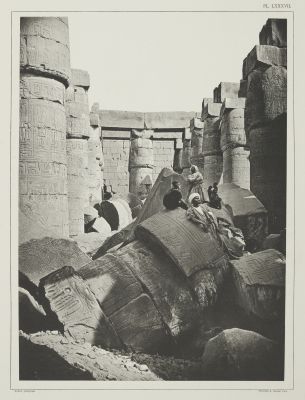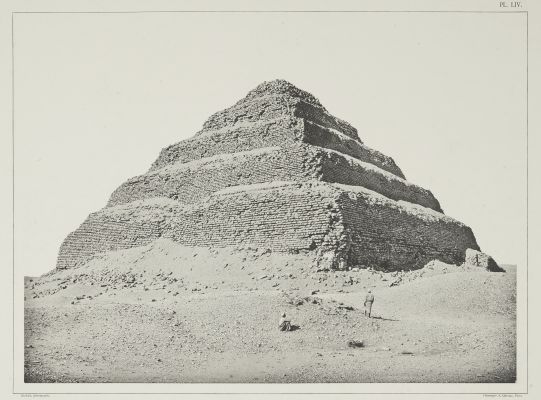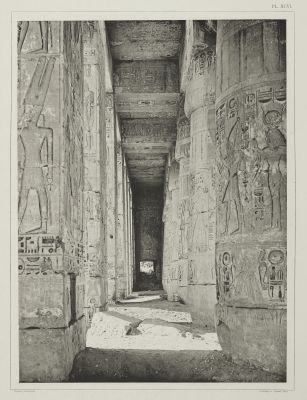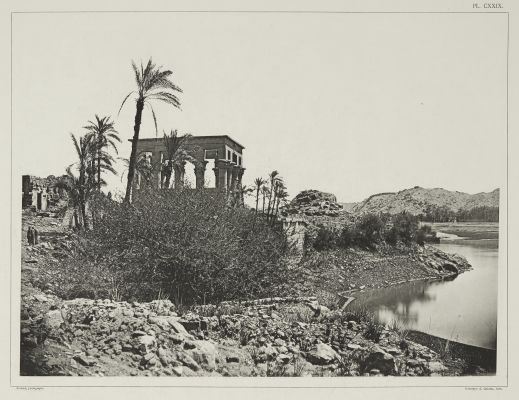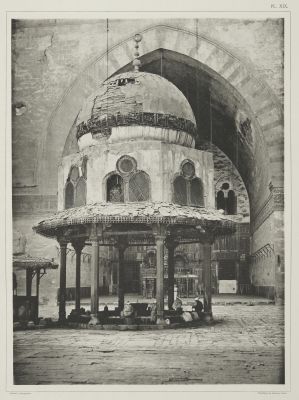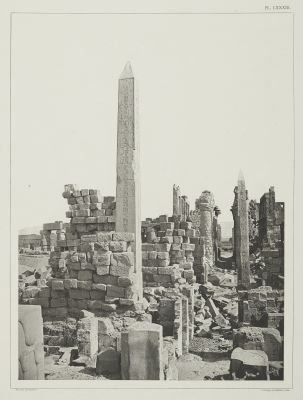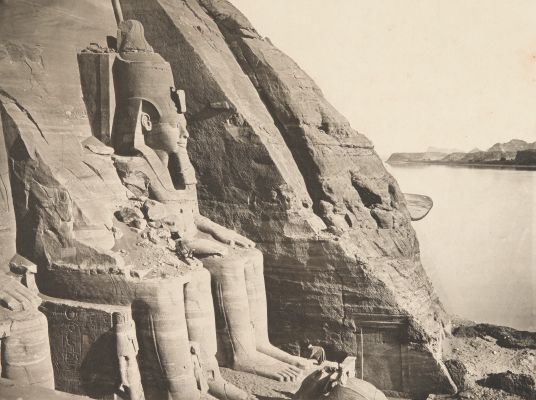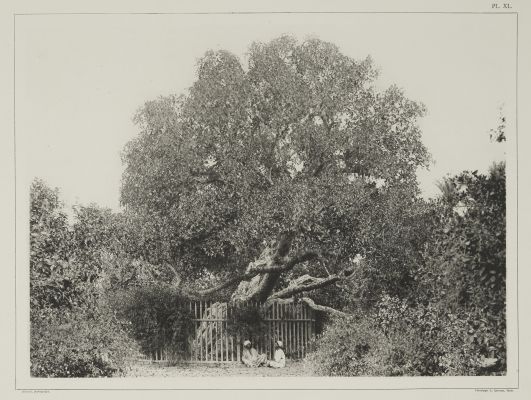
Title
(Pl. XXXVII) Sakieh — Système d’Arrosage ArabeArtist
Béchard, Émile (French, 1840-1891)Publication
L'Égypte et la Nubie: Grand album monumental, historique, architecturalDate
1887Process
Collotype (Quinsac process phototypie)Atelier
M.M. Quinsac et G. BaquiéImage Size
27.2 x 37 cmSheet Size
45 x 63 cm
This plate is from L’Égypte et la Nubie: Grand album monumental, historique, architectural (1887), a collection of collotype plates of monuments, views and other scenes in Egypt and Nubia by the French photographer Émile Béchard. The original photographs by Béchard won the "medailled d’or" at the "Exposition Universelle 1878", also known as the third Paris World’s Fair, as proudly stated in the preface. A loose translation reads: "However, with regard to the photographs that we have had reproduced by the unalterable processes of collotype, let us recall here that the jury of the awards at the Universal Exhibition of 1878 judged them worthy of a first class gold medal awarded to their author, Mr. Émile Béchard." [1]
Émile Béchard was a French photographer active during the 1860s, 1870s and 1880s. Working in Egypt from 1870 to 1880, Béchard is above all known for his genre scenes and cunningly composed Egyptian views, as well as his carefully constructed versions of Egypt’s cultural heritage, ancient or medieval. [2] Émile and Henri Béchard together with Hippolyte (Délié) are often thought to be 3 different photographers, related by a family- and/or business-connection [3]. The Met Museum suggests another theory, in which Émile and Henri are the same person, namely Émile Henri Béchard, and Hippolyte was a distributor of Béchard’s work in France.
It is interesting to note the a number of images produced for L’Égypte et la Nubie originally appeared with the credit H. Bechard. However they were changed in this edition. The colloypes were made by A. Quinsac, Paris.
References
[1] L‘Égypte et la Nubie: Grand album monumental, historique, architectural. Paris, Phototypie Quinsac, Imprimerie Chaix, André Palmieri & Émile Béchard, 1887. Large folio, [Reproduction par les procédés inaltérables de la phototypie de cent cinquante vues photographiques par M. Béchard, artiste photographe, comprises depuis Le Caire (Égypte) jusqu’à la deuxième cataracte (Nubie)]. Avec un texte explicatif des monuments d’après nos meilleurs écrivains, par M.A. Palmieri p.5
[2] M. Volait, Emile Bechard. The New Cairo in 1874. https://heritage.bnf.fr/bibliothequesorient/en/emile-bechard-new-cairo-article
[3] Encyclopedia of nineteenth-century photography, p. 131

